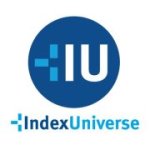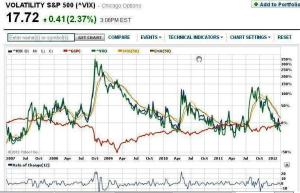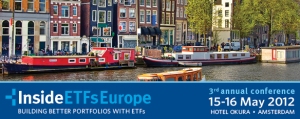![]() courtesy of DowJones’ Peter Davy
courtesy of DowJones’ Peter Davy
Dec 10 2012
Exchange-traded funds may be seen as a low-cost investment option but the huge choice of how to trade these products can have expensive consequences for institutional investors.
“It can have a very significant impact. Get a bad execution and you start with a drag on the performance,” said Deborah Fuhr, partner at ETFGI, the research and consulting firm.
In Europe, unlike the US, only a minority of ETF trading is done on stock exchanges. About 70% of ETF trading takes place over the counter, off-exchange, according to ETFGI. That may mean going to an “authorised participant” that is registered to allow it to create or redeem shares of the ETF with the product provider, or simply buying or selling the ETFs without going through the exchange.
For smaller trades and big ETFs tracking a major index, such as the FTSE 100, that may not be necessary. There an investor may trade up to £3m on exchange with few problems. For the bigger trades undertaken by institutional investors and for more esoteric ETFs such as those based on emerging markets or commodity indices, trading on exchange is likely to affect the price (since ETFs on exchange can trade at a discount or premium to the value of the underlying assets they track), requiring them to look elsewhere to avoid doing so, or just to get a better price than available on the exchange.
Thorsten Winkler, co-founder at Frankfurt-based Advanced Asset Management, which manages ETF funds of funds, said it is natural to turn to the investment banks linked to ETFs when looking to trade those products. He said: “You would think they should be able to provide the best execution of their own product.”
In other circumstances, such as trading an iShares ETF, for example, since BlackRock doesn’t have a broking arm, many investors instead turn to specialist marketmakers, committed to providing continual prices to buy and sell ETFs, such as Flow Traders, Susquehanna and Knight Capital.
At Evercore Pan Asset, another fund manager constructing portfolios of ETFs, co-founder Christopher Aldous is keen on WallachBeth, the US institutional broker that entered the European market earlier this year in a joint venture with North Square Blue Oak. It does no principal trading – in which the broker takes ownership of the ETF – but works purely on commission to try to find the best price for clients from marketmakers and other liquidity providers. Aldous said: “For us it is like outsourcing our ETFs sales trading service.”
Laurie Pinto, North Square Blue Oak chief executive, argues that using agency brokers is the only way investors can be sure they are getting the best price. He said: “How can you trade with a marketmaker knowing he is making money out of trading with you – not taking a commission and getting the best price but making money out of the trade? They make their entire living trading against you.”
However, the marketmakers counter that agency brokers have to deal with them. Matthew Holden, managing director and head of ETF trading for Europe at Knight Capital, said: “Agency order aggregators cannot exist without marketmakers.”
For the full article courtesy of FinancialNews, please click here (subscription required)












